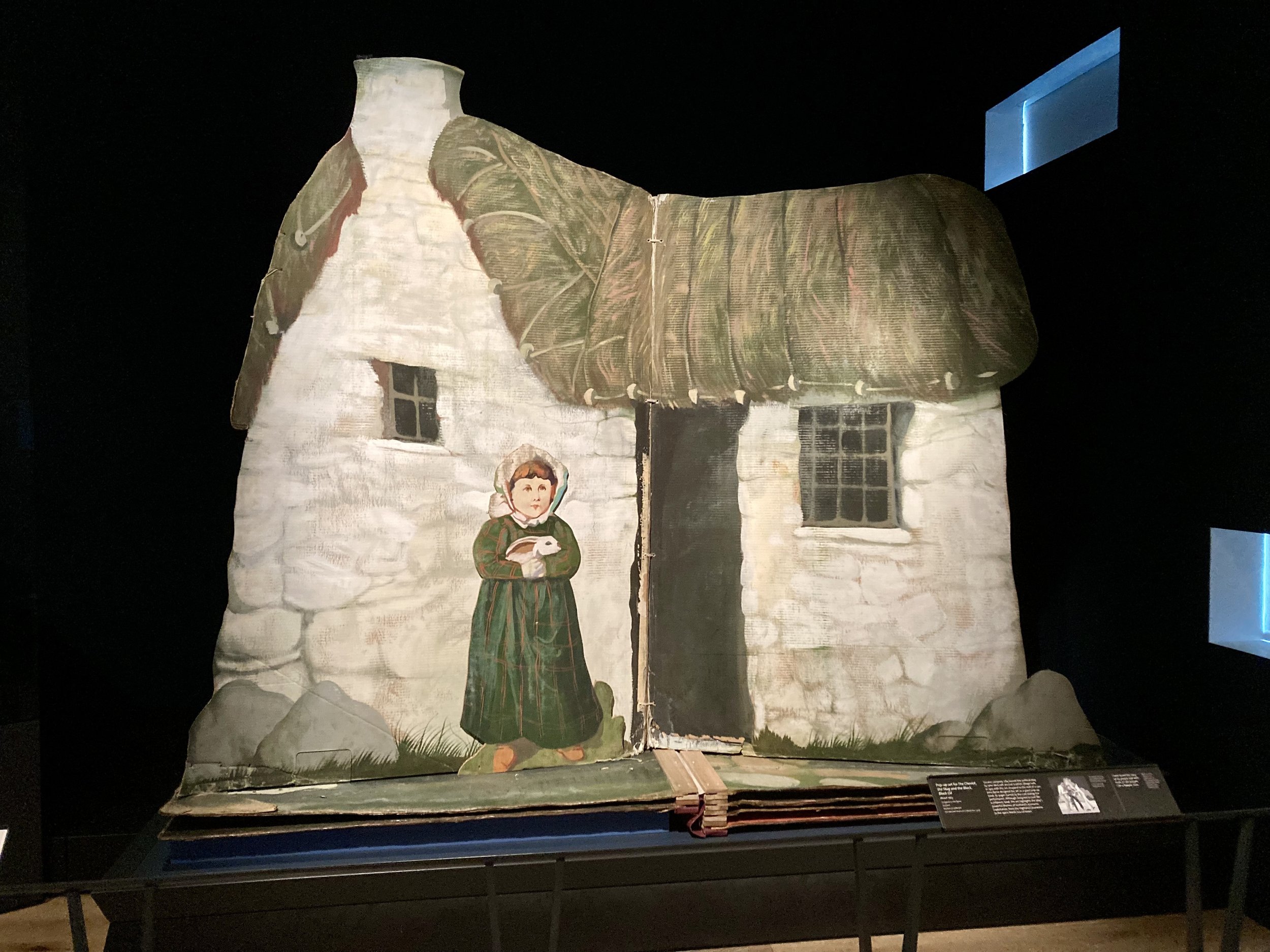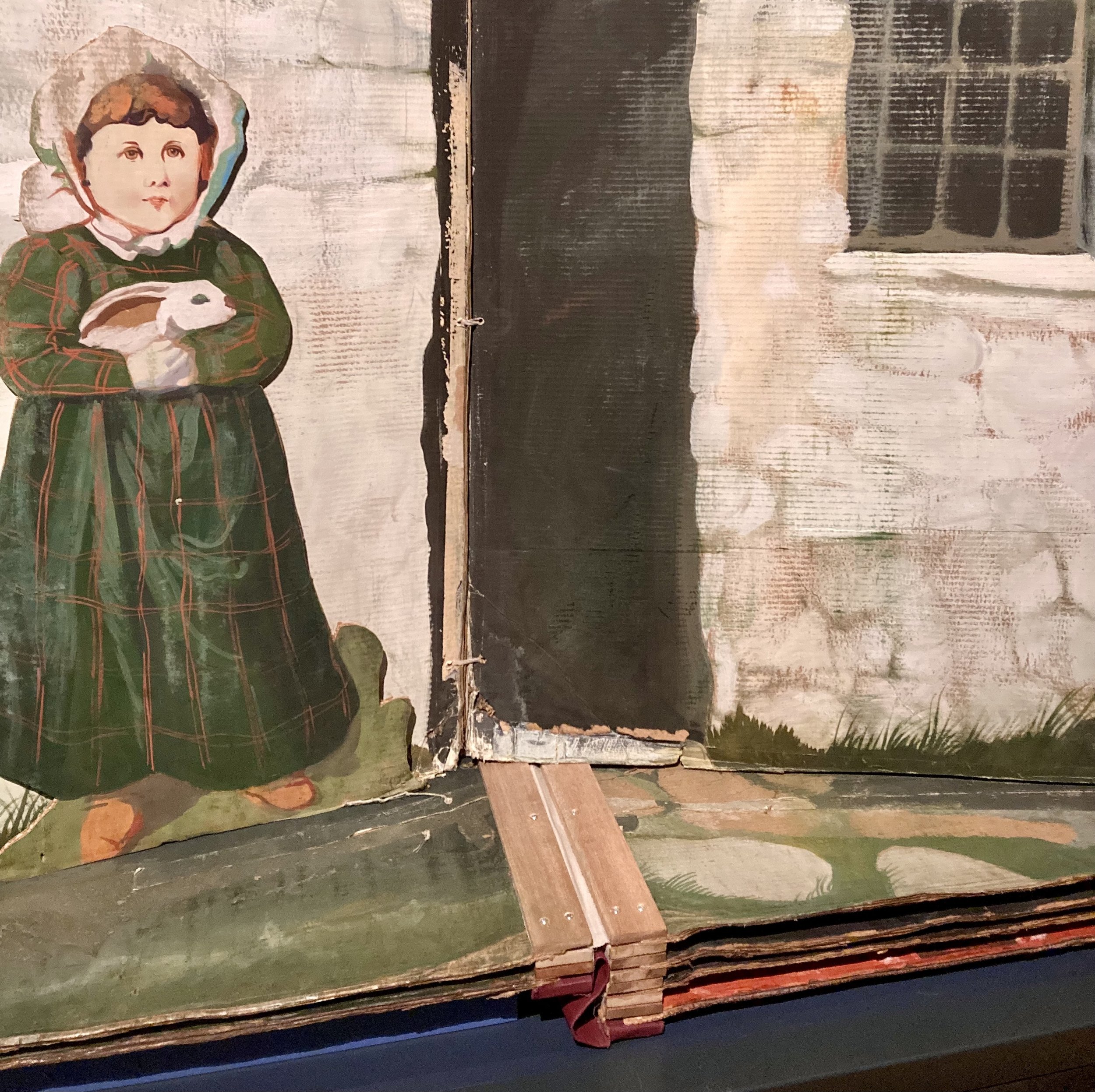John Byrne’s pop-up book stage set for The Cheviot, The Stag and The Black, Black Oil, on display at the V&A Dundee. Photo Shirley A
John Byrne used cardboard to create his giant pop-up stage set for the play The Cheviot, The Stag and The Black, Black Oil, which travelled around Scotland in the 1970s. It has five double-page spreads that open to reveal the scenery for the play. On permanent display at the V&A Dundee, you can go up close to the work and see in detail what it is made from – reinforced cardboard, string, plywood.
Close up, the book’s pages are made from reinforced cardboard, and its spine from plywood and string. Photo Shirley A
This artwork speaks to me on two levels: the materials were used because of their simplicity and practicality, allowing the theatre group to quickly assemble the stage set, change scenes, fold it away, and then transport it from venue to venue. In the same way that Byrne’s use of ‘poor’ materials and the sceneries’ loose, child-like painting style emphasise the economic background of when the play was set, my cardboard forms belie the project’s subtext of a child using play to work through anxieties, as Melanie Klein posited: “It is when a child plays with the small toys that we can see the expression of opposing emotions most distinctly.”1
The pages of a giant pop-up book will set a human-scale scene for viewers to contemplate as they would an installation, by completely immersing them in the narrative. The turning of the page to the next scene continues the story: cardboard’s lightness and strength will allow this for a work of this size.
1 Melanie Klein, Narrative of a Child Analysis: The Conduct of the Psycho-Analysis of Children as Seen in the Treatment of a Ten-year-old Boy, (London: Virago, 1989), p67.

